Are you tired of all the confusing information about nutrition? Yeah, me too! Let’s dive into some easy hacks to maximize the nutritional value of your food.
My favourite thing about these food pairings is they’ll make your food more flavourful, while also increasing your body’s ability to absorb the nutrients. It’s such an easy win.
Fat, Fat, Glorious Fat
First up, let’s talk about the importance of adding fat to your vegetables. You might have heard that all oils are bad, but that’s not entirely true. The anti-seed oil movement that’s happening right now is missing an important point: how your oil is pressed really matters. When shopping for oils to use for cooking, look for “cold-pressed” or “expeller-pressed” on the labels.
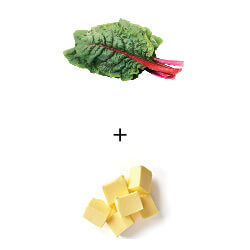
Slather a little butter onto your Swiss chard to help you to absorb its fat-soluble vitamins.
This makes sure that the oil hasn’t been damaged by heat or solvents in the production, and these methods retain lots of the antioxidants and nutrients as well.
But, these oils have a shorter shelf life due to the abundance of phytonutrients, and can go rancid. If you’re not sure how old your oil is, give it a sniff. They should still smell like the food they came from. For example, sesame oil should smell like sesame seeds. Rancid oils often have a bitter scent.
Adding healthy fats like olive oil or butter to your veggies is essential because fat-soluble vitamins like vitamins A, D, E, and K require fat for absorption. So, if you’re not adding fat to your veggies, you might not be getting all the nutrients you need. Fat is also a carrier of flavour, so your veggies will taste extra scrumptious.
For instance, Swiss chard is high in vitamin K, which is essential for bone health, but because vitamin K is fat soluble it needs fat for absorption. So, if you want to absorb all that vitamin K, be sure to add some olive oil or butter to your chard. The same goes for lycopene, a fat-soluble antioxidant found in red veggies like tomatoes. If you’re making pasta with tomato sauce, make sure to drizzle it with some extra virgin olive oil to maximize your lycopene intake.
Beta carotene, found in orange veggies like sweet potatoes and carrots, is another antioxidant that needs a bit of fat as a helping hand. Beta carotene converts to vitamin A, but it needs fat for this conversion. So, if you’re roasting up some sweet potatoes, be sure to slather some butter on them or add some olive oil to your carrots to help your body absorb those nutrients better.
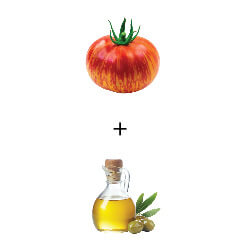
Drizzle a bit of olive oil over tomatoes to help you to absorb its lycopene.
Fermented Foods Help in Many Ways
Fermented foods are rich in probiotics, that can improve gut health, boost immunity and even enhance mood. Pairing fermented foods like sauerkraut, kimchi or kefir with your meals can help with digestion and increase the absorption of nutrients from other foods.
Just adding a spoonful of sauerkraut to your sandwich or serving of roasted vegetables can add a tangy flavour and provide your body with a dose of probiotics. Or, if you drink a small glass of kefir alongside your breakfast, you can help kickstart your digestion and improve nutrient absorption throughout the day.
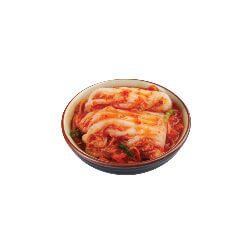
Fermented foods such as kimchi are a good addition to any meal as they help you absorb the nutrients from other foods.
Nutrient Absorption Hacks!
Turmeric is a super antioxidant and anti-inflammatory spice, but it needs a helping hand for absorption. The trick is that curcumin, an important bioactive compound in turmeric, doesn’t absorb well unless it’s in the presence of black pepper. Adding black pepper can increase your absorption of curcumin by up to 2,000%! So, give your next meal that includes turmeric a few cracks of black pepper and when you’re looking for a turmeric supplement, make sure it includes black pepper or pepperine to get the most out of this medicinal spice.
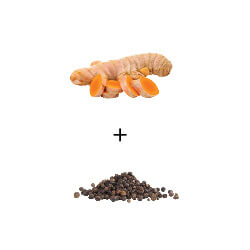
Add freshly-ground black pepper to dishes with turmeric to help you absorb its curcumin.
Next, let’s look at iron absorption. Broccoli and spinach are great sources of iron, but your body needs vitamin C to absorb that iron properly. That’s why it’s a good idea to squeeze some lemon on your steamed broccoli to get the most iron out of it.
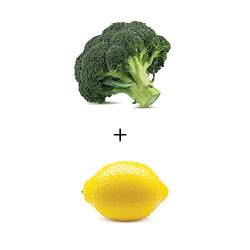
Squeeze a touch of lemon onto your broccoli to help you to absorb its iron.
Eggs and avocado are a delicious pairing and they help each other out! Eggs are a great source of protein and are rich in choline, a nutrient that plays a critical role in brain function. Avocado is a healthy fat that can aid in the absorption of choline and other nutrients found in eggs.
The delicious combination of dark chocolate and strawberries work together too! Dark chocolate is a rich source of flavonoids, a type of antioxidant that can improve heart health and reduce inflammation. Strawberries are high in vitamin C, which can enhance the absorption of flavonoids. Dipping your strawberries in dark chocolate can enhance the absorption of both nutrients—yum.
Protein Combos for the Win!
Pairing beans or lentils with whole grains like quinoa or brown rice can create a complete protein source, as the amino acids in the beans and grains complement each other to form a balanced protein. This is especially beneficial for vegetarians or vegans who may need to pay more attention to protein intake.
Lastly, yogurt and berries make a great pair. Yogurt is a great source of protein and calcium, which can improve bone health and reduce the risk of osteoporosis. Berries are a rich source of vitamin C, which can enhance the absorption of calcium from dairy products like yogurt.
Just remember, eating healthy doesn’t have to be complicated. By adding healthy fats to your veggies, using easy hacks to increase nutrient absorption, and exploring food pairings, you can simplify your eating habits and get the most out of your meals. And they taste great together too!
Article was published in The Good Life magazine.

